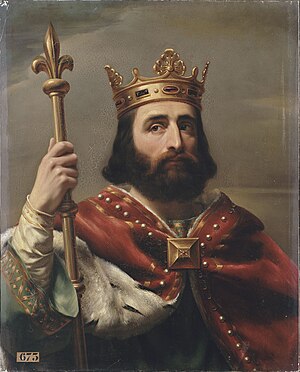Pope Stephen II was born a Roman aristocrat and member of the Orsini family. Stephen was the bishop of Rome from 26 March 752 to his death. Stephen II marks the historical delineation between the Byzantine Papacy and the Frankish Papacy. During Stephen's pontificate, Rome was facing invasion by the Lombards when Stephen II went to Paris to seek assistance from Pepin the Short. Pepin defeated the Lombards and made a gift of land to the pope, eventually leading to the establishment of the Papal States.
The 750s decade ran from January 1, 750, to December 31, 759.
The 740s decade ran from January 1, 740, to December 31, 749.
The 720s decade ran from January 1, 720, to December 31, 729.

Year 752 (DCCLII) was a leap year starting on Saturday of the Julian calendar, the 752nd year of Common Era (CE) and Anno Domini (AD) designations, the 752nd year of the 1st millennium, the 52nd year of 8th century, and the 3rd year of the 750s decade. The denomination 752 for this year has been used since the early medieval period, when the Anno Domini calendar era became the prevalent method in Europe for naming years.

Year 754 (DCCLIV) was a common year starting on Tuesday of the Julian calendar, the 754th year of the Common Era (CE) and Anno Domini (AD) designations, the 754th year of the 1st millennium, the 54th year of the 8th century, and the 5th year of the 750s decade. The denomination 754 for this year has been used since the early medieval period, when the Anno Domini calendar era became the prevalent method in Europe for naming years.
The 640s decade ran from January 1, 640, to December 31, 649.
Year 747 (DCCXLVII) was a common year starting on Sunday of the Julian calendar. The denomination 747 for this year has been used since the early medieval period, when the Anno Domini calendar era became the prevalent method in Europe for naming years.

Year 753 (DCCLIII) was a common year starting on Monday of the Julian calendar. The denomination 753 for this year has been used since the early medieval period, when the Anno Domini calendar era became the prevalent method in Europe for naming years.

Year 756 (DCCLVI) was a leap year starting on Thursday of the Julian calendar, the 756th year of the Common Era (CE) and Anno Domini (AD) designations, the 756th year of the 1st millennium, the 56th year of the 8th century, and the 7th year of the 750s decade. The denomination 756 for this year has been used since the early medieval period, when the Anno Domini calendar era became the prevalent method in Europe for naming years.

Year 652 (DCLII) was a leap year starting on Sunday of the Julian calendar. The denomination 652 for this year has been used since the early medieval period, when the Anno Domini calendar era became the prevalent method in Europe for naming years.
Year 729 (DCCXXIX) was a common year starting on Saturday of the Julian calendar, the 729th year of the Common Era (CE) and Anno Domini (AD) designations, the 729th year of the 1st millennium, the 29th year of the 8th century, and the 10th and last year of the 720s decade. The denomination 729 for this year has been used since the early medieval period, when the Anno Domini calendar era became the prevalent method in Europe for naming years.
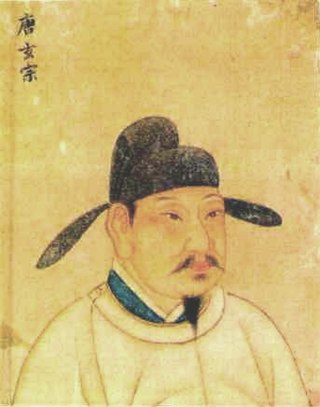
Year 730 (DCCXXX) was a common year starting on Sunday of the Julian calendar. The denomination 730 for this year has been used since the early medieval period, when the Anno Domini calendar era became the prevalent method in Europe for naming years.
Eutychius was the last Exarch of Ravenna, heading the Exarchate from 726 or 727 until 751.

Aistulf was the Duke of Friuli from 744, King of the Lombards from 749, and Duke of Spoleto from 751. His reign was characterized by ruthless and ambitious efforts to conquer Roman territory to the extent that in the Liber Pontificalis, he is described as a "shameless" Lombard given to "pernicious savagery" and cruelty.
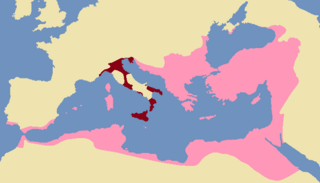
The Exarchate of Ravenna, also known as the Exarchate of Italy, was a lordship of the Eastern Roman Empire in Italy, from 584 to 751, when the last exarch was put to death by the Lombards. It was one of two exarchates established following the western reconquests under Emperor Justinian to more effectively administer the territories, along with the Exarchate of Africa.
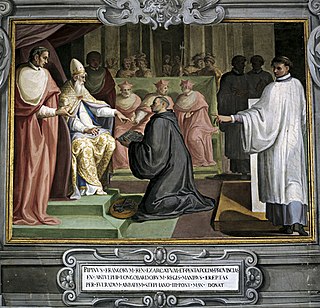
The Donation of Pepin in 756 provided a legal basis for the creation of the Papal States, thus extending the temporal rule of the popes beyond the duchy of Rome.
The Patrimony of Saint Peter originally designated the landed possessions and revenues of various kinds that belonged to the apostolic Holy See i.e. the "Church of Saint Peter" in Rome, by virtue of the apostolic see status as founded by Saint Peter, according to Catholic tradition. Until the middle of the 8th century this consisted wholly of private property; later, its meaning corresponded to the territories under Papal sovereignty, more particularly to the Duchy of Rome, but from the early 13th century the term was applied to one of the four provinces of the States of the Church.
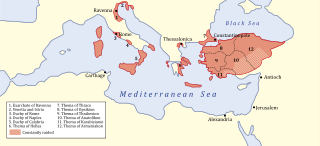
The Duchy of Rome was a state within the Byzantine Exarchate of Ravenna. Like other Byzantine states in Italy, it was ruled by an imperial functionary with the title of dux. The duchy often came into conflict with the Papacy over supremacy within Rome. After the founding of the Papal States in 756, the Duchy of Rome ceased being an administrative unit and 'dukes of Rome', appointed by the popes rather than emperors, are only rarely attested.
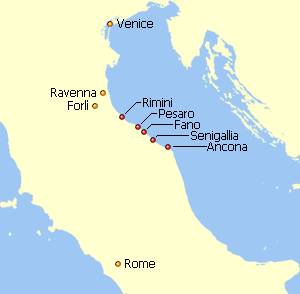
In the Byzantine Empire, the Duchy of the Pentapolis was a duchy, a territory ruled by a duke (dux) appointed by and under the Exarch of Ravenna. The Pentapolis consisted of the cities of Ancona, Fano, Pesaro, Rimini and Sinigaglia. It lay along the Adriatic coast between the rivers Marecchia and Misco immediately south of the core territory of the exarchate ruled directly by the exarch, east of the Duchy of Perugia, another Byzantine territory, and north of the Duchy of Spoleto, which was part of the Lombard Kingdom of Italy. The duchy probably extended inland as far as the Apennine Mountains, perhaps beyond, and its southernmost town was Humana (Numera) on the northern bank of the Misco. The capital of the Pentapolis was Rimini and the duke was both the civil and military authority in the duchy.
